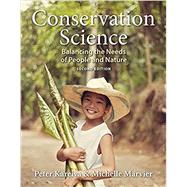Focused on protecting nature and the planet, Conservation Science: Balancing the Needs of People and Nature contains a heavy emphasis on highlighting strategies to better connect the practice of conservation with the needs and priorities of a growing human population to give you an overview of this important area of science.








